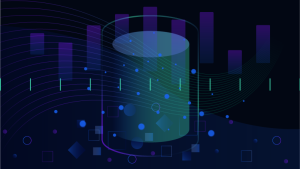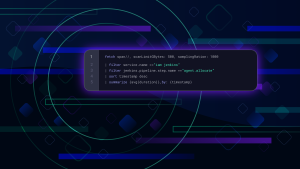You’ve probably heard the “shift left” mantra as it echoes throughout the tech industry. If you haven’t, let me be the first to inform you that you’ve been living under a rock—like a real rock, not a figurative rock.
In all seriousness, the shift-left mantra has shaken things up quite a bit in the tech industry, bringing a paradigm shift in how we approach software development.
The shift-left approach aims to ensure bugs and other issues are discovered and addressed early in the development process, leading to improved software quality and lower costs associated with late-stage troubleshooting. This has also somewhat shifted the burden of software quality, no longer confining it solely to the realm of QA teams. Developers, project managers, and even business stakeholders are now more involved in maintaining and enhancing the quality of the software, creating a sense of shared ownership and facilitating better organizational efficiency.
Despite the immense benefits of the shift-left approach, a fascinating counterpart is emerging in the industry: the shift-right approach. Today, engineers are spending an increasing amount of time developing and testing code in production-like environments. This movement to the right, so to speak, has implications. From navigating through the complexities of the development environment to troubleshooting software in production-ready stages, the challenges are different and often more complex. However, by integrating effective observability tools throughout the software development lifecycle (SDLC), we can overcome these challenges and ensure smoother sailing.
Challenges in the development environment
One of the biggest issues when shifting right is increased complexity within the development environment. Developers, normally confined to the cocoon of the coding stage, find themselves thrust into production-like environments that are rife with intricate dependencies and broad-scale issues.
And let’s be real, these environments aren’t as forgiving as the sandbox playgrounds we’re accustomed to. They’re replete with real-world variables and anomalies, making debugging a complex endeavor, even for the bravest developers. For developers, the familiar luxury of single-step debugging is replaced by multi-factor interactions, making it harder to identify the root cause of issues.
Navigating this environment requires a refined toolset. Developers need observability tools that can deal with the intricate layers of production-like environments, illuminating their path through a dense forest of code. These tools need to be resilient and versatile, capable of providing insights throughout the software development lifecycle. This allows developers to examine the full code lifecycle, from inception to execution, and efficiently troubleshoot any arising issues.
Challenges in testing environments
Testing is no longer just a standalone phase sandwiched somewhere in the middle of the development process. Instead, it’s now prelevant throughout the entire lifecycle. It’s like a surprise party guest popping up when you least expect it, only this time, it’s less about the surprise and more about ensuring that the software we’re crafting is as robust as possible.
The testing environment is becoming more real-world-like, more dynamic, and way more complex. It’s no longer just about testing isolated bits of code. It’s about seeing how the whole jigsaw puzzle fits together in a production-like setting. The goal? To create a mirror reflection of the final stage, allowing you to see and fix the potential mishaps—hopefully, before they crash the party.
Why the sudden change in tune? Well, it’s simple. Modern software development strives for software that’s not just great on paper but truly shines when it hits the real world. This shakeup is a step in that direction, ensuring that development teams are not just building software but building software right. However, as with all good things, this comes with a fresh set of challenges, especially when it comes to debugging and troubleshooting software. Thankfully, the right observability tools are coming to the rescue, helping you to keep pace and stay in sync with the new rhythm.
Challenges releasing new code and features
The cherry on top of software development is releasing your code or features to the market, akin to launching a rocket into space. (Maybe it’s not quite so dramatic, but that’s how it feels. It’s a big deal.)
This stage is exciting but can also feel quite stressful. On the one hand, you’re excited about the new possibilities and enhancements. On the other hand, well, we’ve all seen how many bugs can emerge when you least expect them to.
So how can you ensure a smooth release while simultaneously minimizing customer impact? The answer is simple: get your team the proper observability tools that work throughout the SDLC. With these, you’ll be able to illuminate your path through your code, giving you a clear view of your code’s performance in the real world with actionable insights, allowing you to understand exactly what’s happening in your code at any given moment. It gives you a high-resolution, real-time view of your code as it runs.
And what is the best tool to do this? Dynatrace. Just take a look.




Looking for answers?
Start a new discussion or ask for help in our Q&A forum.
Go to forum